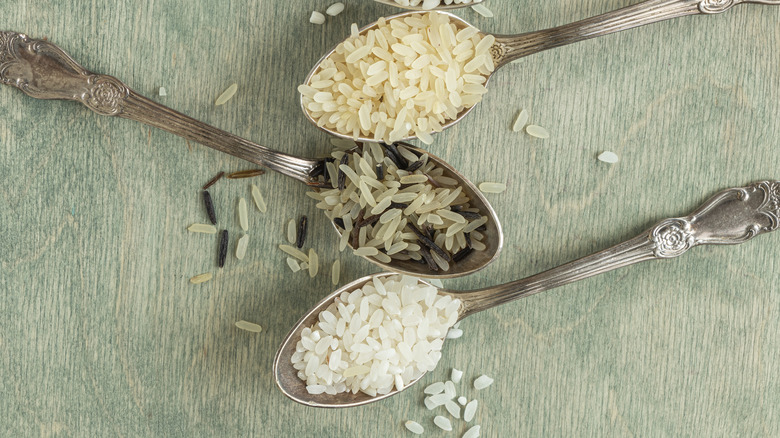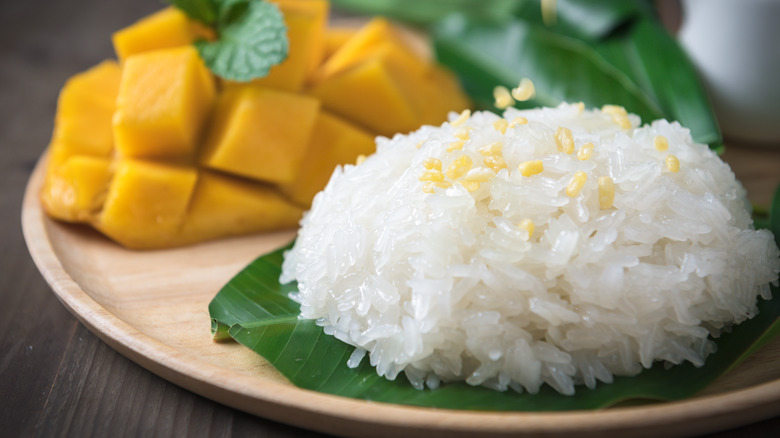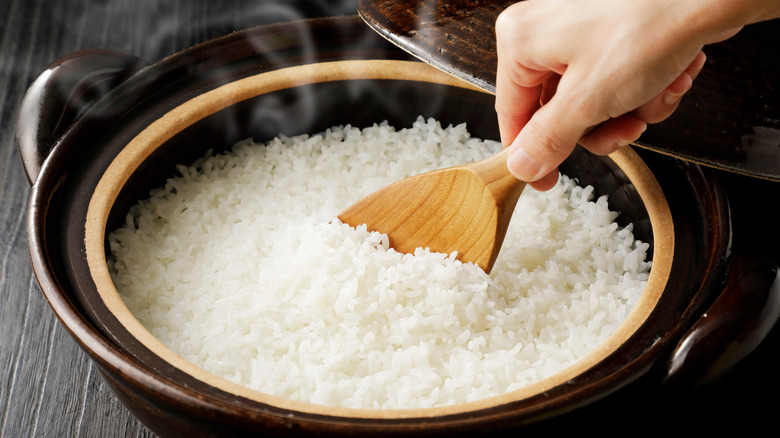Sushi Rice Vs. Sticky Rice: The Subtle Differences Explained
Rice. It's a staple in dishes all around the world, and the grain is as varied as the recipes it ends up in. Basmati, arborio, long grain, short grain, and Jasmine varieties help so many of our favorite dishes come to life. Humans started growing rice over 9,000 years ago and we've been eating it ever since.
With so much variety, it can get confusing, especially if you're venturing into a new cuisine. The myriad of boxes and bags that line the grocery shelves can be absolutely daunting, but they don't have to be. One common point of confusion, especially since they are both prevalent in Asian cooking, is the difference between sushi rice and sticky rice.
Sushi rice and sticky rice are confusing because they both can be, in fact, sticky. They're also both delicious, but that's where their commonalities end. In fact, the two are completely different types of rice and are sticky for very different reasons.
Sticky rice is all about the starch content
Sticky rice is a key ingredient in cuisines across Asia. It's a star in Japanese desserts and a staple in Thai cooking. Sticky rice refers to what is also called glutinous rice. That may be a bit of a misnomer, as it does not actually contain any gluten. It's also sometimes called sweet rice.
Like its many names, sticky rice is actually a few different types of rice. What they all have in common is their unique starch content. Specifically, these varieties of rice have a low amylose content and are very high in amylopectin. That high starch content is what causes the grain of rice to come together and stick to each other when cooked.
One common type is black or purple sticky rice. It's used in dishes like mango sticky rice, where it's cooked with coconut milk for added sweetness and served with mango. Laotian cuisine also relies heavily on sticky rice, with it serving as the basis for most meals.
Sushi rice depends on a special preparation
People think sushi rice is also sticky — think about how it holds on the outside of your favorite California roll or under your favorite cut of sashimi. Just because it can be sticky, however, doesn't mean it's glutinous rice. In fact, sushi rice is sticky because of how it's prepared, not due to its starch content.
Rice is really the backbone of good sushi, and the chefs that prepare it are exceedingly serious about their craft. The famous chef Ono Jiro described the importance of good rice in the documentary "Jiro Dreams of Sushi," comparing it to the sun when he says, "The brighter the sun is, the more lustrous the moon will be," (per Michelin). Good rice highlights and complements the other ingredients on display.
What makes sushi rice, or "shari" as it's traditionally known, special is the fact that it's cooked with sugar, rice wine vinegar, and rice wine (mirin). These ingredients are what make sushi rice taste slightly sweet. They serve an even more important purpose though — they help preserve the rice so that it can safely sit at room temperature. Sushi shouldn't be served too cold, and thanks to the preparation, sushi rice is both safe and delicious.


